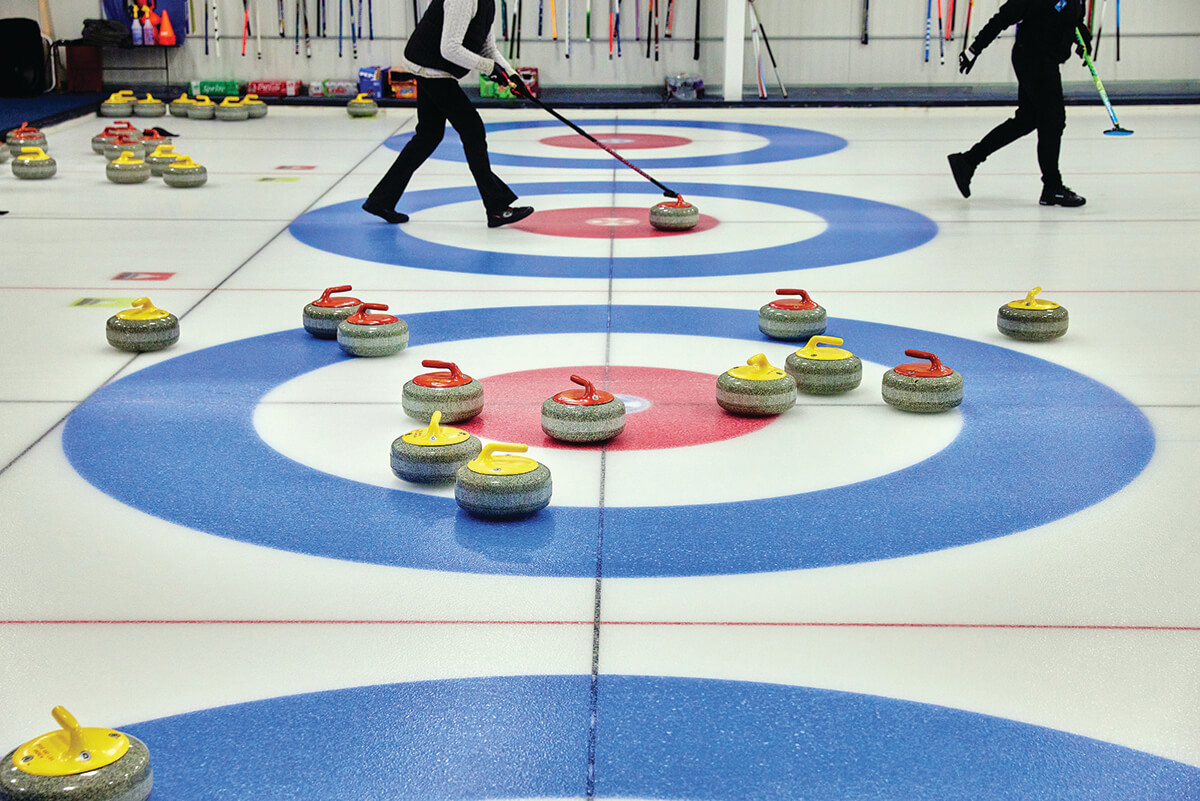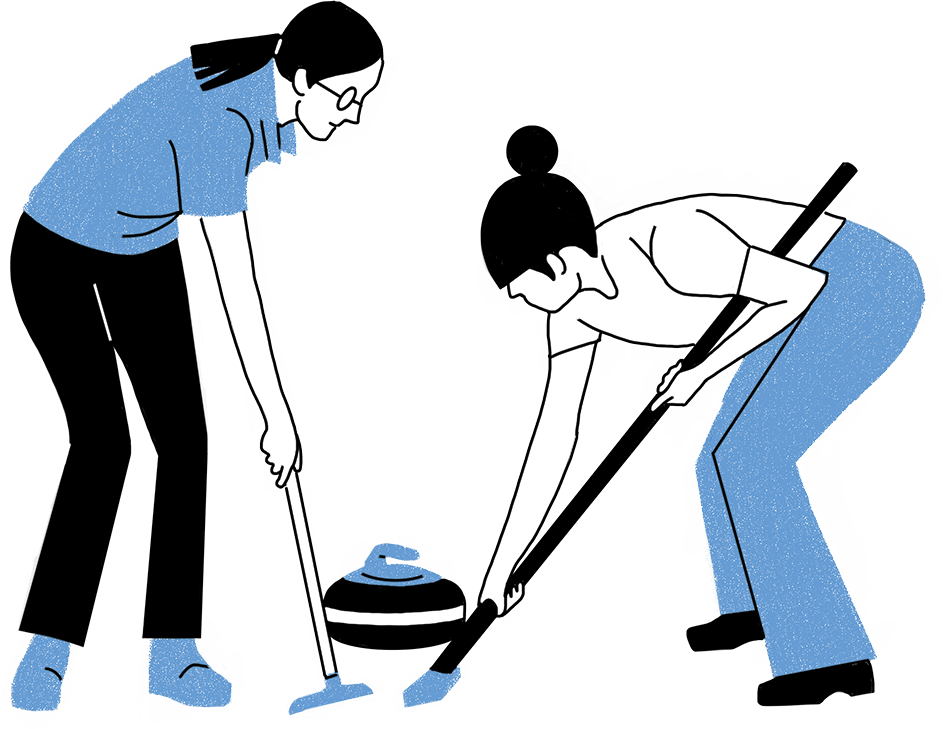Sports
Potomac Curling Club Unites Hundreds Who Find Joy in the Strangely Satisfying Sport
At the National Capital Curling Center in Laurel, members play and teach curling in men’s, women’s, doubles, youth, and social leagues—and refreshingly don’t take their collective self all that seriously.

A visit to the National Capital Curling Center in Laurel, pictured above, is like experiencing a Winter Olympics broadcast of the peculiar, competitive (in a leisurely sort of way) broom-and-rock game brought fantastically to life. In a brightly lit and ice-cold “shed,” as Potomac Curling Club members call the playing area, rows of bull’s-eye-style targets frame each end of the huge rectangular ice sheet here, which has been specifically designed for sliding 42-pound granite stones—with handles.
Attached to The Gardens Ice House, it’s one of the few curling venues in the Mid-Atlantic region. You can either watch in a warm lounge through a set of windows or step inside and try the sport yourself, even if for the first time.
If you choose the latter, you’ll be handed a lightweight broom and a pair of grippy rubber oversoles to help with your footwork. Next, friendly and more experienced curlers will offer tips amid the sounds and jargon of this centuries-old winter game with roots in Scotland. You’ll hear the “skip” (captain) of a four-person team shout “sweep!” (self-explanatory) or “up!” (stop sweeping) to teammates with brooms as a stone pushed and spun by another teammate “curls” toward its target nearly 150 feet away in the “house”—a trio of concentric blue, white, and red rings surrounding the “button” (bull’s-eye).

The Potomac Curling Club, which takes its name from its origins just outside Washington, D.C., in the 1960s, relocated more than 20 years ago to the dedicated facility in Laurel. The volunteer-run club includes roughly 350 members with a diversity of interests and jobs (doctors, lawyers, plumbers, electricians, etc.) who all find common joy in this strangely satisfying game. They play and teach curling in men’s, women’s, doubles, and social leagues, as well as a variety of introductory and youth programming—and refreshingly don’t take their collective self all that seriously.
“Nobody is born with a curling broom in their hand. Some clubs are very competitive. We’re a lot more on the social side,” says Kevin White of Columbia, one of the club’s program coordinators and instructors.
That’s not to say you can’t learn as much about curling as you want. A women’s Olympic hopeful—for India—from Northern Virginia practices at the center and offered some guidance on a recent visit.
“It’s a lot more nuanced than it looks,” says Fred Hatem, 67, of Bel Air, a retired family court magistrate whose curling interest was piqued after watching the last Winter Olympics.
Much like shuffleboard, the delivery of the smooth stone down the ice is paramount, requiring steady coordination during a sliding one-knee crouch. Sweeping can slow, accelerate, or straighten the stone’s path. Typically, curling is played between two teams over eight “ends,” akin to innings in baseball. Every player throws two rocks per end, and games are scored like bocce. Afterward, “broomstacking” (socializing) is customary, much like golf’s 19th hole.
“I love it,” Hatem says, “and the atmosphere is so welcoming and pleasant.”
Explore more winter outdoor activities from our Winter Wonderland issue, here.